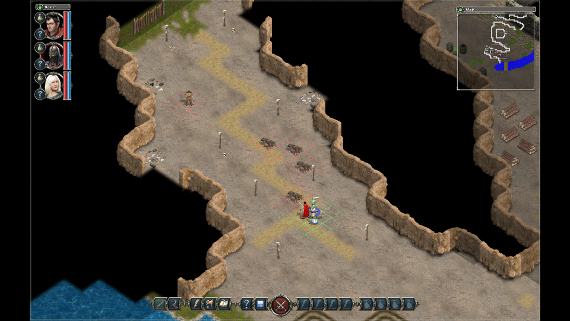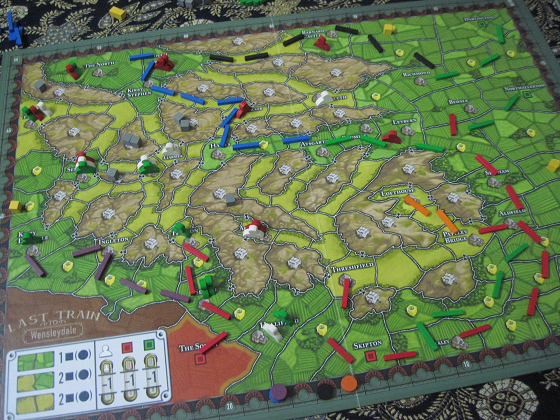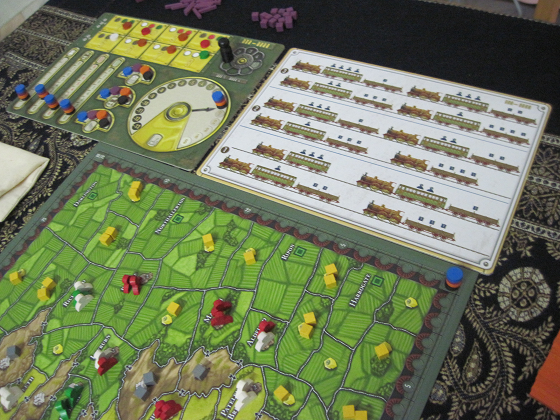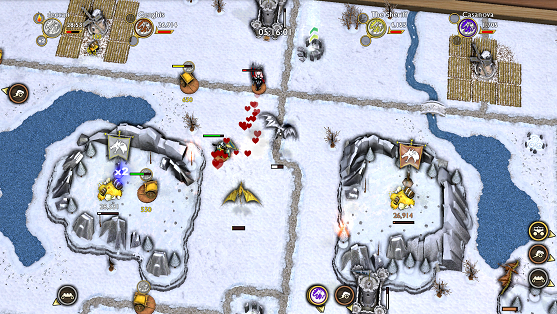
A gallant knight is making off with a princess who is rightfully yours, so it’s time to toast him!
Hoard is a lightweight arcade game that I bought only because it was so highly praised by Tom Chick. I thought it would be a little like the old monster games where you control a giant monster and stomp around a city or something. Instead, it’s lighter weight even than that because the maps are so small and so simple, plus the only attack your dragon is breathing fire. So much for my dreams of chomping armored knights in half or knocking down towers with my tail. Some quick notes:
- It’s a very old-school design in which everything is about maximizing your score. In the standard Treasure mode, you get points for stealing gold and bringing it back to your hoard. Each game lasts for a predetermined length of time and whichever dragon has the most points wins. Basically anything on the map can be destroyed for money, towns, carts bringing produce from farms, towers, even little enemy archers.
- Every time your score count hits a certain level, you get to upgrade your dragon so he’s even meaner. You have the usual options like speed, firebreath, armor plus your gold carrying capacity, very helpful to minimize trips between the killing zone and your hoard. In Treasure mode, your dragon can’t die. If he takes enough damage, he’ll automatically fly back to his hoard to heal, wasting time. But the real punishment is that this resets the multiplier counter, which as you can guess, multiplies all the gold you’ve earned. It can go up to x 3 so it’s obvious that keeping that multiplier at max is key to getting high scores.
- The cool part of this game is that the map is dynamic, to a certain extent. At first, the map will be mostly empty so you’ll be flying around looking for something, anything to smash. But soon enough farms and towns will pop up. If you leave them alone, they’ll grow faster, so you’ll see farms become bigger, towns grow into cities with outbuildings etc. Cities are naturally a richer target and generate more valuable caravan trains for you to hit, but they also spawn more archers to protect them. The same balance goes for pretty much anything. A newly spawned single mage tower can be killed fairly easily, but if you let it upgrade to its full potential, it has insane range and damage. So your dragon will eventually feel like the hunted instead of the hunter.
- The other single-player modes are Princess Rush, in which the winner is the first dragon to successfully kidnap and ransom 15 princesses and Hoard mode, in which your dragon has no homebase and must instead survive for as long as possible on the map. In Hoard mode, the only way to heal is by kidnapping princesses and gathering gold gives you a bonus to your final time.
Overall, this is too lightweight for my usual tastes but it is a decent game to play in short spurts since a session takes no more than 10 minutes or so. It’s also very gratifying to see your skills improve as you practice more. At first, you’ll be stumbling around the countryside repeatedly getting killed by knights and toasted by enemy dragons, but soon enough you’ll be able to dodge bolts from wizard towers and grab princesses from under the noses of other dragons like a pro. You probably will need a gamepad to play it properly however.
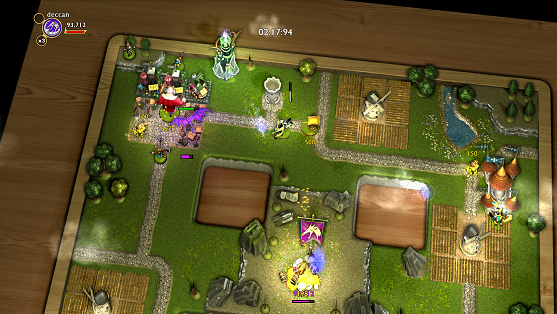
Wizard towers, fully developed cities and even a rampaging giant, this map has plenty of targets for your dragon to go after.



